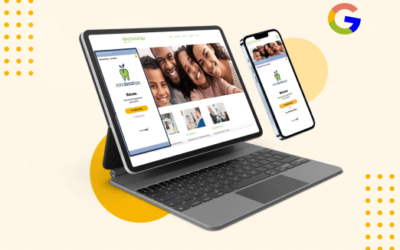
I love marketing. I was one of the first practices in my area to enthusiastically embrace marketing. I’m always trying out new ideas, adding as many of Dr. Robert Cialdini’s 6 Principles of Persuasion as I can while testing new forms of marketing. I track campaigns, analyze the results and then make my next marketing moves accordingly. So how can I be so sure that most readers are wasting their marketing budgets? Because you don’t know what you don’t know.
I am a great believer in the ability of well-planned marketing campaigns to attract interest and drive potential new patients to call your practice. Marketing can be incredibly persuasive. However, you’ll only see a return in your marketing dollars if you can convert that initial interest, that first call from a potential new patient, into an appointment.
A Small Window of Opportunity
What do I mean? Imagine you’re part of the marketing team for a new brand of soft drink. You create a great marketing campaign. It’s so clever, it goes viral. Customers across the country are storming the grocery stores, ready to buy that drink. Your marketing is a success. There’s just one problem. When the customers get to the store, they can’t find your drink. It hasn’t shipped yet. Instead, they face empty shelves. Do you think they’re going to bother coming back in a few days to buy your product? Or are they more likely to move on to their second choice, and forget your product ever existed? Your marketing campaign was a huge flop. It didn’t matter if your advertisements create a market if you can’t connect new customers to the product.
So, what does this have to do with you? Your practice isn’t selling a product. It’s providing a service. It’s not like you can run out of appointments. You can however, fail to connect new patients with those appointments. And in many of the practices I encounter, that practice happens at the very first appointment. New patients are trying to call your practice, and they’re not getting through. Your practice is losing money on missed opportunities, and those missed opportunities are the result of missed new patient calls. How do I know? Just like I saw it in my own practices data, I see it in yours too.
Where New Patient Calls most often Go wrong
How can a new patient call go awry? Well, you could answer it, put them on hold, and lose them. You could fail to schedule them. Or maybe your front desk person is just rude, and they hang up. These are possibilities, but as I’ve worked with practices across a variety of specialties, I’ve found that the number one reason practices miss the opportunity to schedule new patients is that they never answer those calls in the first place. And they don’t realize that they’re missing the calls, because they have no way to track lost calls, only answered calls.
Based on the data from Call Tracker ROI, which tracks marketing calls from dental offices all over the US and Canada, a typical office only schedules about 1/3 of the new patient calls into a scheduled appointment. However, the bigger issue I see is that 32%-55% of new patient calls that came in go unanswered. It goes to voicemail, or the caller gets a busy signal. What does this mean? Now the patients have given up on your practice before they ever talk to a living person.
Why does this happen, even when you have virtual phone lines? New patients, unlike existing patients, aren’t committed to your office. They won’t hang around on hold. If you send them to voice mail, they hang up. When their calls aren’t answered promptly and by a living person, they assume they’ve learned something about your office. The lesson they learn is “This place doesn’t care about serving their patients.” They don’t have time to leave a message as they have 1000 other tasks they need to complete that day so they continue searching for another dental office so they can scratch this task off their “to do” list. And, just like that, they’re back on Google looking for someone else who can solve their problem. You’ve just missed the opportunity to book a new patient appointment and grow your practice.
A Fix for Your Phone Woes
You care about your patients. You provide great care. So why are new patients getting a false impression? Because your phone lines are tied up with existing patients, calling to book appointments, change appointments, and ask billing questions that your desk staff has no time to answer the new patient calls in the mix. Those calls are getting dropped into oblivion while your receptionist is trying to check in Mrs. Smith, schedule Mr. Jones, and answer a call about surgery appointment from Ms. Robertson. Meanwhile, your practice isn’t growing because it’s too hard for new patients to get through. What are your options?
- More Desk Staff. Free up one or two people to answer the phone by separating the task of ‘answering calls’ from the task of ‘dealing with the people in the waiting room.’
- Totally different phones for new and existing patients. Tracking numbers are important, but it might be helpful to have one line specifically for existing patients. Existing patients will leave a message or call back. If both lines are ringing at once having different phones can give a visual cue to send the existing patient to voicemail while your team deals with the new patient.
- Schedule while the patient is in the chair. Every practice should be doing this. Existing patients can be scheduled in the operatory, by someone on your team. It reduces wait times for patients as they check out, frees up desk staff to deal with phones, and ensures that patients book their follow-up appointments promptly.
- Call back within 7 minutes. After a call goes unanswered, you have 7 minutes to call back and get that person on the line before they try another practice. Call Tracker ROI for instance has a patented text alert that tells the team they missed a new patient call within 7 seconds as well as texting the potential new patient to let them know their call is important and someone from your team will be calling them right back.
- Add a chat option to your website. People are used to lags during a chat and will hang on a bit longer waiting for a response. Plus, desk staff can chat with one patient while talking to another. Adding a chat frees up phone time and is a huge convenience for existing patients.
- Allow patients to two–way text with your team. A secure two-way texting option lets your patients connect with you without the same urgency as a call. Texting lets your patients know you want to communicate with them the way they prefer to communicate with you. It also lets your team book new and existing patient appointments without tying up the phone line.
- Contract with an outside service to answer your new patient calls. If bringing on more team members to handle the problem isn’t an option or you constantly have front desk turn over on you, I created Golden Goose Scheduling so that busy offices could outsource new patient calls instead of hiring extra staff or adding extra trainings. When you contract with an outside service, all your tracking numbers from advertisements can be redirected to the service as well as any other new patient calls that come into your office from sources such as referrals. They can be the first to grab the phone call or be back up to your team. They can answer the phone, schedule patients, and increase your ROI from advertisements. Before you sign a contract, investigate the services. When I tried a call center that didn’t specialize in dental and medical practices, their conversion rate was worse than my teams. You need to work with a company that understands the barriers to scheduling that are specific to your field, and that trains its employees to break down barriers and get new patients into the office.
Next Steps
Once you’re answering all new patient calls and scheduling most new patients, you can think analytically about your marketing, collect data, and see which campaigns produce leads and which are simply duds. This was a key way I was able to improve my own team’s stats. Back in the day we didn’t answer 220 new patient phone calls and only made an appointment 24% of the time when we did talk to patients. After getting the data I needed to find out what the problem really was and implementing the above strategies, I was able to answer more new patient calls, get my teams conversions to over 80% and reduce my marketing costs by 74%. The result? New patient numbers went from 60/month to over 300/month all while spending less. You can get there too but your first step has to be eliminating missed opportunities. When you connect patients who need help with the services you provide, you’ve taken a big step towards growing your practice and thriving in your field.

Written by Dr. Chris Phelps
Golden Goose Scheduling, CallTracker ROI
Learn about Golden Goose Scheduling
Learn about CallTracker ROI


